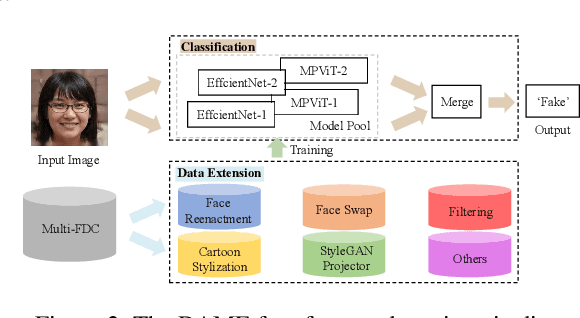Yingying Ao
CustomListener: Text-guided Responsive Interaction for User-friendly Listening Head Generation
Mar 01, 2024Abstract:Listening head generation aims to synthesize a non-verbal responsive listener head by modeling the correlation between the speaker and the listener in dynamic conversion.The applications of listener agent generation in virtual interaction have promoted many works achieving the diverse and fine-grained motion generation. However, they can only manipulate motions through simple emotional labels, but cannot freely control the listener's motions. Since listener agents should have human-like attributes (e.g. identity, personality) which can be freely customized by users, this limits their realism. In this paper, we propose a user-friendly framework called CustomListener to realize the free-form text prior guided listener generation. To achieve speaker-listener coordination, we design a Static to Dynamic Portrait module (SDP), which interacts with speaker information to transform static text into dynamic portrait token with completion rhythm and amplitude information. To achieve coherence between segments, we design a Past Guided Generation Module (PGG) to maintain the consistency of customized listener attributes through the motion prior, and utilize a diffusion-based structure conditioned on the portrait token and the motion prior to realize the controllable generation. To train and evaluate our model, we have constructed two text-annotated listening head datasets based on ViCo and RealTalk, which provide text-video paired labels. Extensive experiments have verified the effectiveness of our model.
Multi-Forgery Detection Challenge 2022: Push the Frontier of Unconstrained and Diverse Forgery Detection
Jul 27, 2022



Abstract:In this paper, we present the Multi-Forgery Detection Challenge held concurrently with the IEEE Computer Society Workshop on Biometrics at CVPR 2022. Our Multi-Forgery Detection Challenge aims to detect automatic image manipulations including but not limited to image editing, image synthesis, image generation, image photoshop, etc. Our challenge has attracted 674 teams from all over the world, with about 2000 valid result submission counts. We invited the Top 10 teams to present their solutions to the challenge, from which three teams are awarded prizes in the grand finale. In this paper, we present the solutions from the Top 3 teams, in order to boost the research work in the field of image forgery detection.
 Add to Chrome
Add to Chrome Add to Firefox
Add to Firefox Add to Edge
Add to Edge